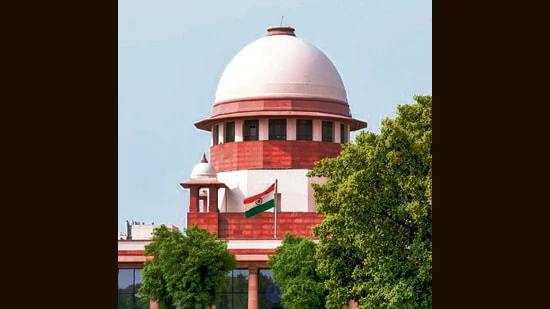The Supreme Court on Wednesday asked the Union government to consider whether a condemned prisoner could be given the option of choosing between hanging and lethal injection, observing that methods of execution across the world have undergone significant change since the colonial-era practice of death by hanging was codified in India.
A bench of justices Vikram Nath and Sandeep Mehta made the observation while hearing a petition filed by advocate Rishi Malhotra, who has challenged the constitutional validity of Section 354(5) of the Code of Criminal Procedure, which mandates that a person sentenced to death “shall be hanged by the neck till he is dead.” This provision has been replaced by Section 393(5) of the Bharatiya Nagarik Suraksha Sanhita (BNSS), 2023.
“It (death by hanging) is an old procedure. Several things have changed in the meantime world over. Consider what Mr. Malhotra’s suggestions are,” the bench told senior advocate Sonia Mathur, appearing for the Centre, while suggesting that the government may consider review the existing mode of execution.
Malhotra, pressing for reform, urged that even if the present method is retained, those facing capital punishment should be allowed to choose between hanging and lethal injection — the latter, he argued, being “a more dignified and humane way to die.”
“More than 40 countries have moved to lethal injection, which is a more dignified way of execution than the death by hanging, which is an excruciating way of dying when your body lingers on the rope for more than half an hour,” Malhotra told the court.
Mathur, however, referred to the Centre’s affidavit filed in May 2023, in which it informed the top court that it was in the process of constituting an expert committee to examine whether a less painful and more humane method of executing the death sentence could replace hanging. She added that since the attorney general R Venkataramani, who is leading the case, was indisposed, she would return after ascertaining the latest status of the proposed committee.
Accepting her request, the bench deferred the hearing to November 11, while asking Mathur to consult the authorities on Malhotra’s proposal.
In its earlier affidavit before the court in May 2023, the Union government maintained that hanging remained the “safest and quickest” method of execution, arguing that it eliminates the possibility of a lingering death. The affidavit rejected lethal injection as a viable alternative, citing data from the United States to point out that chemical executions have the highest rate of botched outcomes, and that trained medical professionals were unlikely to participate in such procedures.
The Centre further emphasised in the affidavit that the death penalty is imposed only in the “rarest of rare” cases, involving acts of exceptional depravity or brutality, and cautioned that making the process “overtly comfortable, serene and painless” could dilute its deterrent effect.
Nonetheless, the government told the court then that it was open to reviewing the existing system and was in the process of appointing a committee to study alternative methods of execution. The bench had then noted that it was inclined to examine whether hanging, as the prescribed method, was consistent with the constitutional guarantee of dignity in death, and whether scientific evidence supported a less painful mode of execution.
The court’s scrutiny builds on its March 2023 observation that the 1983 judgment in Deena @ Deena Dayal vs Union of India, which upheld hanging as a constitutionally valid method, did not consider the test of proportionality, nor did it compare empirical data on pain and suffering caused by different methods.
Malhotra’s 2017 petition has argued that execution by hanging amounts to cruel, inhuman and degrading treatment, violating the right to life with dignity under Article 21 of the Constitution. Relying on international practices and the 187th report of the Law Commission, which had also recommended replacing hanging, Malhotra contended that the state’s power to deprive life must be exercised in a manner that inflicts the least possible pain.
The petition called upon the court to direct the government to adopt a modern, humane mode of execution, such as lethal injection, intravenous anaesthesia, or firing squad, or at the very least, to give the condemned prisoner the right to choose the mode of death.
